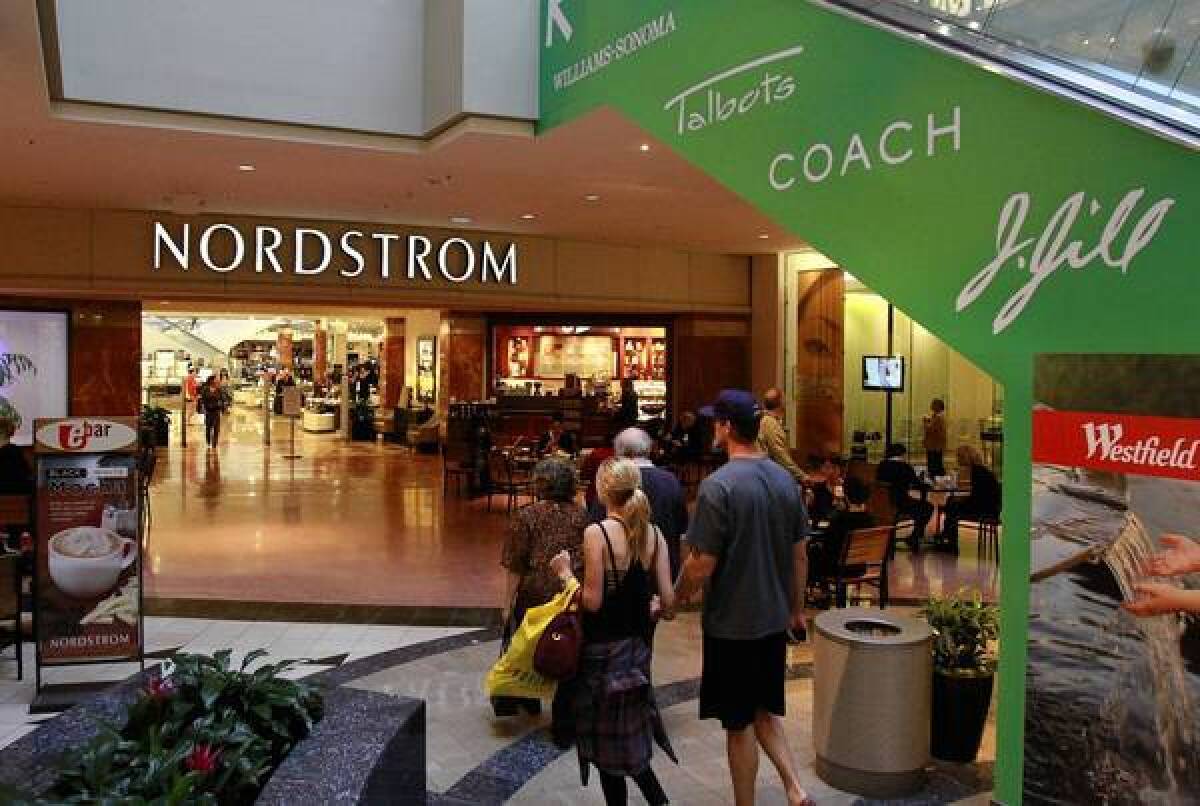U.S. economy grows faster, but the details are less upbeat

WASHINGTON — U.S. economic growth improved in the third quarter to a surprisingly solid 2.8% annual rate, the fastest in a year, bolstered by a restocking of goods by businesses.
Details of the Commerce Department’s report Thursday, however, were less encouraging. They showed the pace of consumer and business spending, two crucial drivers of the economy, slowing in the three months that ended Sept. 30.
Many analysts viewed the overall report as another indication that the economy is still struggling to break out of a four-year-long recovery that has been slow, bumpy and marred by unexpected shocks, the most recent of which was the federal government shutdown.
“The economy remains stuck in the mud,” economists at Bank of America said.
Yet there were bright spots in the report on the third-quarter gross domestic product, which measures the total value of goods and services produced in the nation.
Investment in residential and commercial structures was strong. And state and local governments, thanks to a rebound in tax revenue, increased their expenditures enough to offset the waning effects of federal spending cuts under the so-called budget sequester.
What’s more, separate economic reports Thursday — showing declining jobless claims for last week and rising retail sales in October — painted a more favorable picture of the economy.
A key reading of the economy will come Friday when the Labor Department releases the employment numbers for October. Most economists expect weaker job growth than the mediocre 148,000 added to payrolls in September.
The jobless rate is expected to rise from September’s 7.2% because of the 16-day partial federal shutdown. The rate is likely to fall back down when November’s data is released next month because the furloughs were temporary.
Stronger GDP growth in the third quarter — up from 2.5% in the second quarter — would generally suggest a brighter outlook for hiring and income gains. But that doesn’t appear to be the case this time because the acceleration masked underlying weaknesses in demand.
Consumer purchases of cars and food picked up in the third quarter, but spending on services flattened out. The main reasons: a big drop in expenditures for utilities, mainly natural gas, and softer activity at nonprofit hospitals and financial service firms, such as mutual funds, according to Jason Chute, the Commerce Department’s services program manager.
On the whole, consumer spending grew 1.5% in the third quarter, which was the smallest gain in two years and down from 1.8% in the second quarter.
The slowdown in business investment was more worrisome. The recovering housing market boosted spending for structures, but business investments for computers, technology and other equipment fell over the quarter, only the second quarterly decline since the recovery began in mid-2009.
Business leaders and experts blamed this partly on the heightened uncertainty over the budget and instability caused by repeated political clashes in Washington.
“Balance sheets are quite strong. I think companies have the ability to invest,” said Robert W. McCutcheon, a partner in Pittsburgh at the PricewaterhouseCoopers accounting and consulting firm. “The real question is: Do they immediately have the willingness to invest [with] that uncertainty, whether economic or political?”
The corporate retreat in technology spending is likely to be felt especially in places such as Silicon Valley, said Sung Won Sohn, an economist at Cal State Channel Islands.
Sohn said the overall reluctance of businesses to invest also will dampen the already weak job market. “Because business confidence has diminished, they’re not buying equipment,” he said, “and they’ll slow hiring as well.”
Another potential weight on hiring is the unexpectedly large stockpiling of goods in the third quarter, which boosted the GDP rate 0.83 of a percentage point. Inventory gains in one quarter tend to have a reverse effect in the next quarter, as companies don’t need to stock up as much after a big buildup. But that will depend at least partly on sales in the current quarter.
On the retail front, there were positive signs Thursday from chain store sales. By one gauge, Retail Metrics, same-store sales last month were up a stronger-than-expected 3.7% over the same month last year. A tally from the International Council of Shopping Centers showed a 4.1% increase at stores open at least a year.
“They’ll get back on track,” said Michael P. Niemira, chief economist for the shopping centers trade group, referring to the lackluster consumer spending in the third quarter.
He noted that businesses possibly have boosted what they normally are keeping on their stock shelves. The government also could lower the inventory buildup estimates when officials revise the GDP data in the coming weeks.
Niemira said his group was forecasting stronger holiday sales and hiring this year compared with last year. “It’s not bad,” he said.
More to Read
Inside the business of entertainment
The Wide Shot brings you news, analysis and insights on everything from streaming wars to production — and what it all means for the future.
You may occasionally receive promotional content from the Los Angeles Times.











